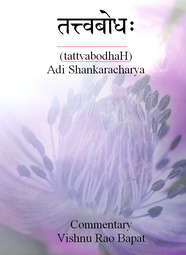Q: How do you teach Advaita to a blind person ? I am talking about a person who has been blind since birth, who has no vision of external reality/unreality. The adhyAsa bhAShya talks about superimposing the subject and the objects. But both subject and object are not perceived by a person who has been blind since birth. All that he/she would be aware of is taste, smell, sound, sensations. How would you proceed with such a candidate ? The theory of negating the superimposed almost fails for such a person, for he/she cannot ‘see’ or ‘perceive’ what is superimposed !
I am not saying the avasthA traya is not a good way to start here, the avasthA traya prakriyA holds good for even a blind person. That is, your dream is just like your waking state. But the problem is, there is no perception in either dreams, waking or deep sleep for such a person. Here’s a video that confirms that people who are blind since birth don’t see anything in their dreams : https://www.youtube.com/watch?v=XpUW9pm9wxs.
If you’re a jIvanmukta, I request you to close your eyes and then tell me if you can still get established in the self, you’d understand how difficult this is !
Thanks for any and all inputs on this subject.
Note: I am aware that Atman is beyond perception, but to know one has gone beyond perception is easy when one still sees and not when he doesn’t see. It’s just the same for a blind man. Continue reading






